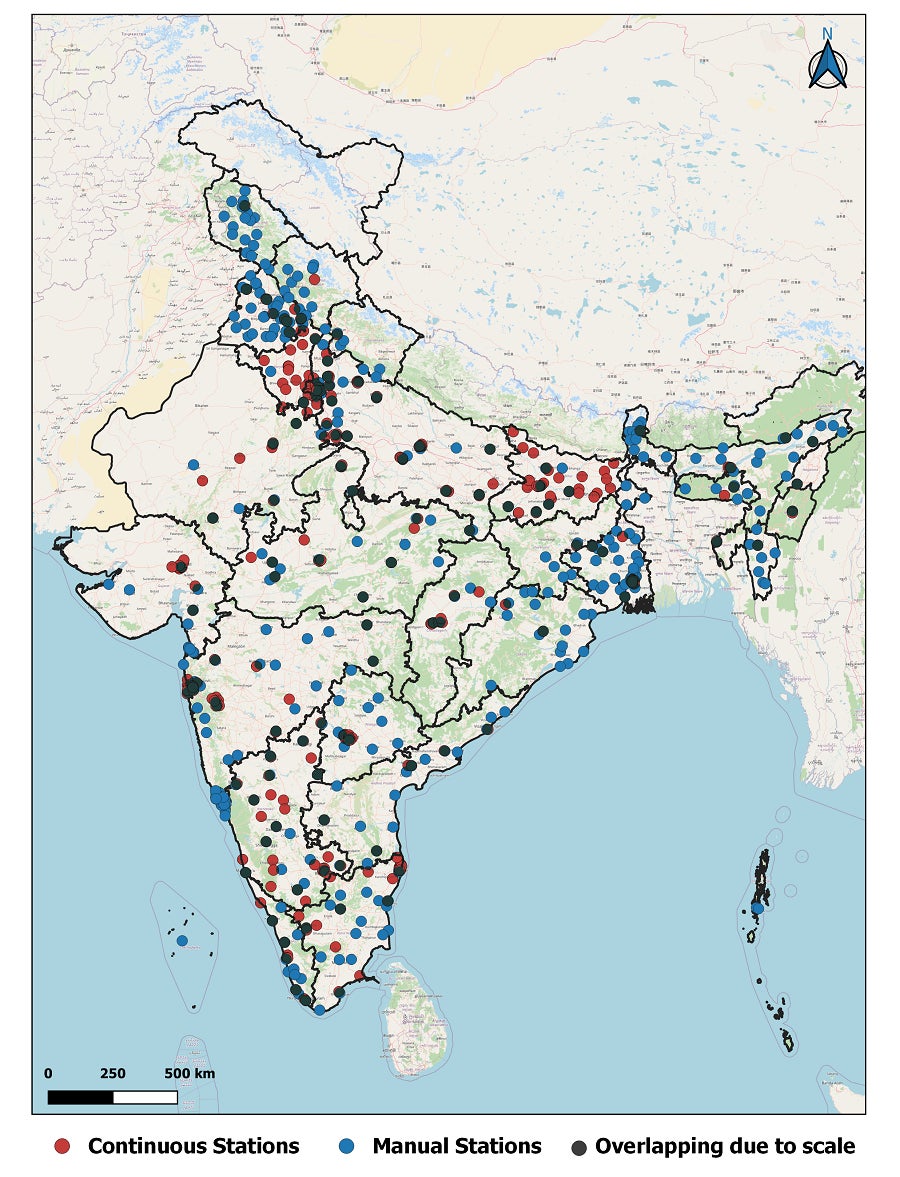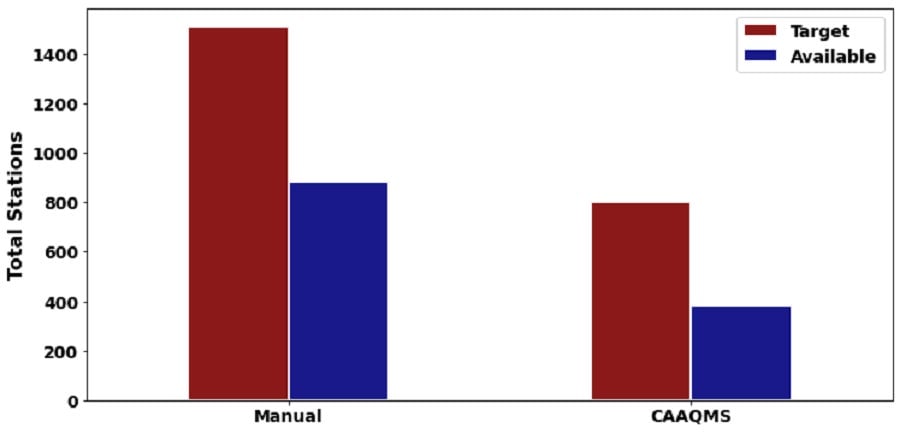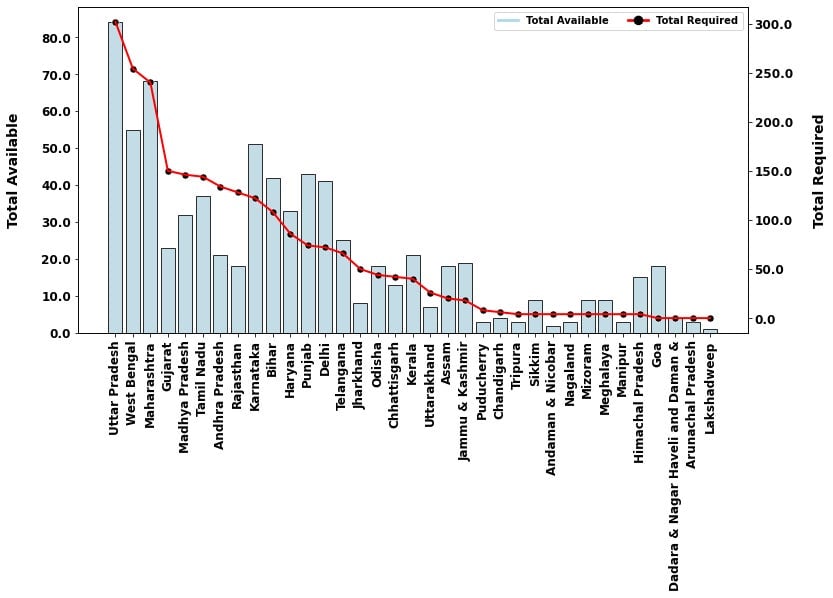India needs to rethink the way it monitors air quality
Some Indian states have begun using sensor-based technology and remote sensing through satellite simulations

For India, rising air pollution levels have always been a concern from local, national, and global viewpoints. As a result, the country is now working to reduce pollution levels down to the National Ambient Air Quality Standards (pdf) (NAAQS) through various government initiatives.
Suggested Reading
To achieve the global air quality (AQ) standard, India requires a reliable integrated ambient air quality monitoring network to accentuate the pollution scenarios and monitor the ensuing improvement from on-the-ground corrective measures.
Related Content
The air quality monitoring stations measure particulates (called Particulate Matter) of size below 10 micrometres (µm) and 2.5 µm that have the potential to get deposited in the respiratory tract. The stations also detect harmful gases such as sulphur dioxide, nitrogen dioxide, carbon monoxide, ozone, etc. The advanced monitoring stations installed are integrated with meteorological analysers capable of monitoring wind speed, wind direction, temperature, relative humidity, etc.
Continuous Ambient Air Quality Monitoring (CAAQM) and Manual Monitoring (Manual) are the standard monitoring techniques practised in India. Both these techniques have their pros and cons. Manual stations are the more cost-effective portable equipment.
The AQ monitoring in India began in the year 1984 using manual stations. Later the federal agency gradually began adopting sophisticated technology like CAAQM to gain more insights into pollutant behaviours.
As part of manual monitoring, gravimetric-based analysis is labour-intensive and requires a laboratory. It provides data with a one-day lag.
On the other hand, CAAQM provides real-time information (i.e., at an interval of 15 minutes to 1 hour) of pollutant concentration (particulates and gaseous) and meteorological conditions using state-of-the-art analysers. Thus, there is no need for sophisticated chemical laboratories and highly skilled professionals to conduct the analysis. But, one monitoring station under CAAQM requires high capital and operational cost ranging between Rs. 10-15 million overall. These stations occupy larger space and are energy intensive.
Other emerging monitoring techniques, such as sensor-based technology and remote sensing through satellite retrievals, are also gaining momentum. Continuous and manual technologies have received federal approval. To get the attention of decision-makers, other technologies like sensor-based and satellite-based must demonstrate their effectiveness in producing error-free or acceptable AQ data consistent with other federally recognised technologies.
How robust are the Air Quality (AQ) monitoring facilities in India?
Indian states, namely Andhra Pradesh, Sikkim, Mizoram, Telangana, West Bengal, Kerala, Punjab, Haryana, Jammu and Kashmir, Tamil Nadu, Himachal Pradesh, Bihar, and Maharashtra, seem to be addressing the pressing need for a well-spatially distributed network by establishing an integrated monitoring network (CAAQM and Manual). This inference is based on the assumption that more than 50% of districts in the state are deployed with at least one monitoring station.
The rest of the states need to intensify their efforts to build and enhance the monitoring system.

In 2018, National Green Tribunal (NGT) directed (pdf) to strengthen ambient air quality monitoring nationwide by defining the minimum requirement based on the 2011 census and land use types. The various land uses include residential, commercial, industrial, traffic dominant, and background. The background is a location situated at the upwind and downwind direction of the city, having minimal and maximum influence, respectively, from pollution from the city sources.
Upon complying with the direction, India should operate 2312 monitoring stations covering approximately 502 cities across 26 states and five Union Territories (UTs). As of September 15, 2022, India possesses 1,266 ambient air quality monitoring stations, which is approximately 54% of the actual target.
Additional push needed
Though the government has managed to cover significant ground to mitigate air pollution, it needs to rethink several aspects of policy, finance, etc., to further strengthen nationwide air quality monitoring.
Some of the ways this can be done include a convergence of funds, meeting the minimum monitoring requirements, fortifying monitoring protocols, being open to emerging technologies and monitoring or perceiving beyond the statutory requirements.

It is expensive to expand and run air quality monitoring equipment. The National Air Quality Monitoring Programme (NAMP), the National Clean Air Programme (NCAP), and the Smart City Mission are a few of the central government programmes and aimed at improving the monitoring mechanism. The Fifteenth Finance Commission Grant has also identified cities for performance-based grants. Currently, the respective state government holds the major share of investment towards upscaling the monitoring stations to the current numbers. All these resources must come together with a shared purpose to avail the optimum benefit.
India has established 1266 ambient air quality monitoring stations, but it still needs to focus on satisfying the minimum monitoring requirements.
NGT has directed (pdf) that these monitoring stations will have to ensure the bare minimum requirement of operation. The degree to which Indian states and cities complied with this directive differs. Only 20 stations have been found to be complying with the direction, and 136 partially complied.
In addition to setting up ambient air quality monitoring stations, it is vital to ensure regular operation to meet the rationale. National Ambient Air Quality Standards (NAAQS, 2009) has notified a minimum requirement of 104 measurements (days) per year at a particular site. The recommended standards somehow seem unfair to the cost of CAAQM station where millions of rupees are spent to capture just a little over 1/4th of the full year’s information.
The recommendations might be designed taking into account the technicalities associated with the operation of the manual monitoring stations, which now require upgradation to meet the present demands.

There is a need for openness towards emerging technologies, The use of sensor-based air quality monitoring technology is expanding in Indian cities due to its ability to provide real-time data at a lower cost than a CAAQM station. Satellite and modelling-based simulation retrievals are able to make space due to their explicit feature to deliver granular-level spatial information.
Although the federal agency has yet to embrace these technologies, an upsurge in the use of non-conventional technologies is visible in numerous Indian cities. These technologies are not standardised, which leaves room for the emergence of redundant and inconsistent data.
To foster uniformity in data collection, storage and access, a federal agency should serve as the liaison for drafting and developing a standard policy for using non-conventional technologies.
And then, there is a rural-urban divide in monitoring air pollution. Air pollution is not limited to geographical boundaries, so restricting air quality monitoring within the city limit may not reveal an accurate picture of the overall pollution and its sources. Monitoring in rural areas is still at a very primitive stage. The rural regions have their indigenous sources of pollution that are largely unnoticed and unaddressed under the lens of urban air quality monitoring. To achieve a holistic improvement in air quality, urban and rural regions should be equipped with monitoring systems.
This post first appeared on mongabay.com.
